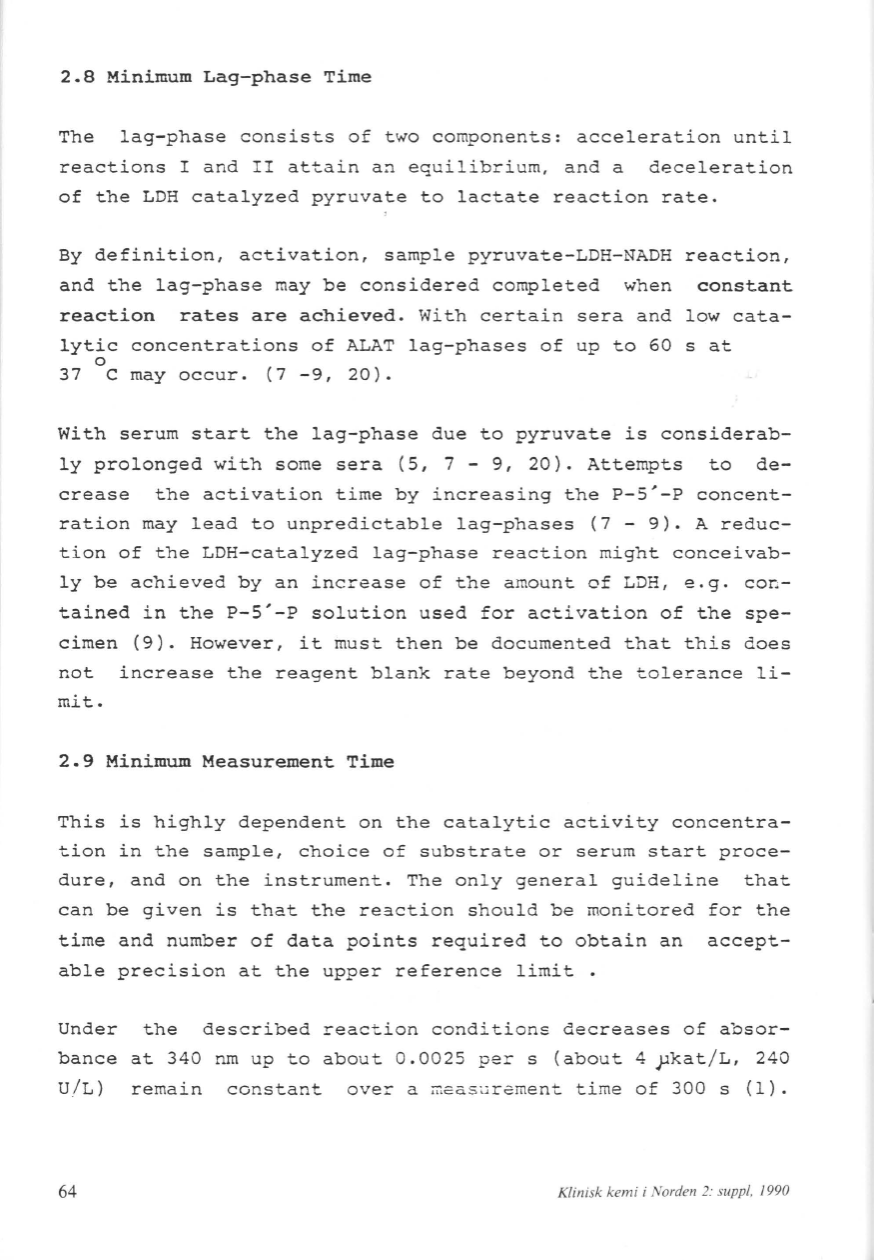
2.8 Minimum Lag-phase Time
The lag-phase consists of two components: acceleration until
reactions
I
and
II
attain
a~
equilibrium, and a
deceleration
of the LDH catalyzed pyruvate to lactate reaction rate.
By definition, activation, sample pyruvate-LDH-NADH reaction,
and the lag-phase may be considered completed when eonstant
reaction rates are achieved. With certain sera and low cata–
lytic concentrations of ALAT lag-phases of up to
60
s at
o
37 C
may occur.
(7 -9, 20).
With serum start the lag-phase due to pyruvate is considerab–
ly prolonged with same sera
(5, 7- 9, 20).
Attempts to de–
crease the activation time by increasing the P-5'-P concent–
ration may lead to unpredictable lag-phases
(7- 9).
A reduc–
tion of the LDH-catalyzed lag-phase reaction might conceivab–
ly be achieved by an increase of the amount of LDH, e.g. con–
tained in the P-5'-p solution used for activation of the spe–
cimen
(9).
However, it must then be documented that this does
not increase the reagent blank rate beyond the tolerance li–
mit.
2.9 Minimum Measurement Time
This is highly dependent on the catalytic activity concentra–
tion in the sample, choice of substrate or serum start proce–
dure, and on the instrument. The only general guideline that
can be given is that the re3ction should be rnanitared for the
time and number of data points required to obtain an accept–
able precision at the upper reference lirnit .
Under the described reaction conditions decreases of absor–
bance at 340 nm up to about 0.0025 per s (about 4 pkat/L, 240
U/L) remain eonstant over a rnaas u rsment time of
300
s (l).
64
Klinisk kemi
i
Norden 2: suppl, 1990


